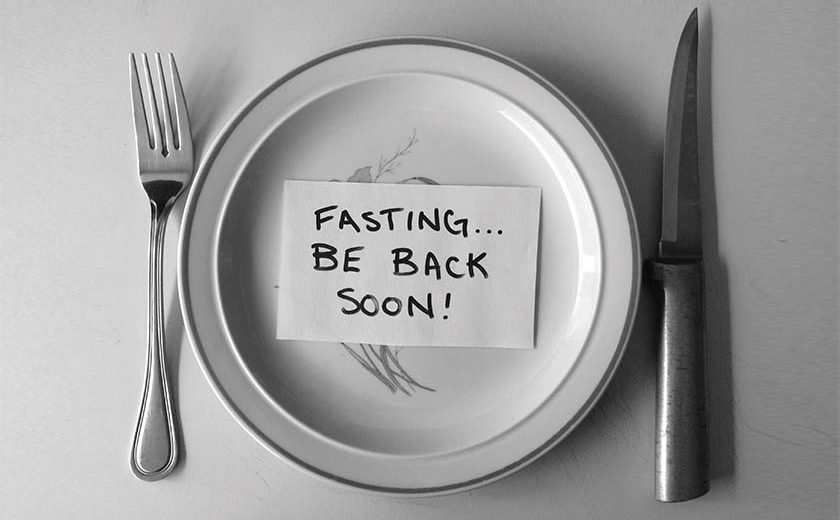Fasting itself is not new to any community as it has been practiced since the earliest of times by different cultures around the globe.

Dr Krishnaveni (MBBS)
Medical Consultant In Spectrum Of Life (SOL)
These fasting practices however have a more spiritual inclination but having said that, the only guaranteed way to preserve a healthy lifestyle practice or even a ritual is to give it a spiritual connection.The fasting body goes through a cleansing process, limits its energy use and detoxifies naturally. A heathy body gives rise to healthy mind and spirit. This way, it gets the recognition it deserves and its practice is preserved over the generations.
Periods of voluntary abstinence from food and drink is called Intermittent Fasting. This type of fasting is not a diet, but a diet regime or an eating style that is purported to accelerate fat burning and losing weight. Over the years, many theories have been advanced about how much you should eat and the correct time to eat, to achieve optimal health.
Research reveals many affluent communities eat all day long, as frequently as 15 out of the 24 hours. Most also consume a majority of their daily calories late in the evening which is actually deleterious to health. Such eating patterns lead to dysfunctional metabolic processes and have an impact on health and wellbeing.
Therefore, with intermittent fasting you narrow the window to about 8 hours a day for eating. During the fasting period which is more than 8 hours, the body will burn the carbs stored in your body as glycogen. After that your body is stimulated to burn fat as its primary fuel.
Different Types of Intermittent Fasting
1. The 16/8 Method: Fast for 16 hours each day
The 16/8 Method involves fasting every day for 14-16 hours, and restricting your daily “eating window” to 8-10 hours.This method is also known as The Leangains Protocol. In this method of fasting, one does not eat anything after dinner, and skips breakfast.
You can drink water, coffee and other non-caloric beverages during the fast, and this can help reduce hunger levels.
2. The 5:2 Diet: Fast for 2 days per week
The 5:2 diet involves eating normally 5 days of the week, while restricting calories to 500-600 on two days of the week.
3. Eat-Stop-Eat: Do a 24-hour fast, once or twice a week
Eat-Stop-Eat involves a 24-hour fast, either once or twice per week.This can be fasting from dinner one day, to dinner the next, this amounts to a 24-hour fast. You can also fast from breakfast to breakfast, or lunch to lunch. The choice is yours based on your convenience. Water, coffee and other non-caloric beverages are allowed during the fast, but no solid food.
4. Alternate-Day Fasting: Fast every other day.
Alternate-Day fasting means fasting every other day. On the fasting days, you are allowed 500-600 but calories /day. Of- course there are some people who take to the extreme of consuming zero calories on fasting days. This is not encouraged.
5. The Warrior Diet: Fast during the day, eat a huge meal at night.
It involves eating small amounts of raw fruits and vegetables during the day, then eating one huge meal at night. Basically, you “fast” all day and “feast” at night within a 4- hour eating window. This diet also emphasises a paleo type diet – whole, unprocessed foods that resemble what they looked like in nature.
The Benefits of Intermittent Fasting
The research on intermittent fasting is mixed. There are improvements in metabolic markers, like blood sugar, insulin and lipids but however, individual circumstances vary. And those circumstances might change over a given period of time.
A new review evaluated the various approaches to intermittent fasting, particularly the advantages and limitations for its use in fighting obesity and type 2 diabetes.
What the researchers found was that overweight or obese individuals with type 2 diabetes who fast on consecutive or alternate days lost more weight, while also experiencing enhanced heart health and cardioprotective benefits.
Studies included in the review showed a broad range of therapeutic potential even when total calorie intake per day did not change, or was only slightly reduced. This includes evidence that intermittent fasting may:
- Limits inflammation
- Improves circulating glucose and lipid levels
- Improves metabolic efficiency and body composition
- Causes significant reductions in body weight in obese individuals
- Improves pancreatic function
- Improves insulin levels and insulin sensitivity
As you can see the benefits of Intermittent Fasting revolves around improving overall metabolic health, improving glucose and lipid levels and Insulin sensitivity. Therefore, with this mind, it will be an absolute waste to not enhance their effects by exercising regularly to attain better results and sustained changes. A good cardio workout done at the correct time can further boost fat burning properties and build muscle at the same time. Intermittent fasting does nothing to build muscle although research shows that it does help to preserve lean body mass unlike other starving type diets.
Researchers noted in the British Journal of Diabetes & Vascular Disease:3
“Intermittent fasting can be undertaken in several ways but the basic format alternates days of ‘normal’ calorie consumption with days when calorie consumption is severely restricted. This can either be done on an alternating day basis, or more recently a 5:2 strategy has been developed [see figure below], where 2 days each week are classed as ‘fasting days’ (with <600 calories consumed for men, <500 for women).
Importantly, this type of intermittent fasting has been shown to be similarly effective or more effective than continuous modest calorie restriction with regard to weight loss, improved insulin sensitivity and other health biomarkers… Despite the seemingly strict nature of the fasting days intermittent fasting has a generally good adherence record.”
Who Should Not Practice Intermittent Fasting?
Individuals who are chronically ill with uncontrolled health issues like chronic diabetes, chronic stress with adrenal and cortisol dysregulation, insulin users, severe peptic ulcer diseases, pregnancy and breast feeding mothers.
Does Intermittent Fasting Slow Down The Metabolic Rate?
We have always been advised to not skip meals and to be non-erratic with meal timings. This is because our body is designed to programme itself and to be optimally functional if it follows a routine. Digestive enzymes are usually very functional if food is consumed at timely intervals.
- Therefore, if you chose to do intermittent fasting, you must choose the type that is most suitable to your body type and you need to stick to the routine. This way your body will get used to the schedule and adjust itself.
- In intermittent fasting, extremely low- or no-calorie intake is only for short periods. If fasting continues indefinitely without a return to normal calorie intake, then the body’s metabolism will slow down. But, short periods like the 5:2 or 16:8 approach, appear to maintain and possibly temporarily increase calorie burning. The constant flux of fasting and normal intake keeps the body on its toes, rather than allowing it to slow.
- The other misguided thinking is to equate normal intake to binging or excessive intake. “Normal intake” refers to taking in the body’s estimated calorie needs with a healthy variety of foods. It doesn’t mean taking in excessive calories or binging on favourite foods.
Nutritional status
Intermittent fasting does not mean inadequate nutrition. Food that is consumed during the non- fasting periods should have good nutritionally. One of the best things about intermittent fasting is that you do not have to starve yourself.
Make healthier food choices and be careful to minimise carbohydrates and replace them with healthy fats, like coconut oil, olive oil, olives, butter, eggs, avocados and nuts. It typically takes several weeks to shift to fat-burning mode, but once you do, your body will actually burn stored fat and not have to rely on new carbohydrates for fuel.
Final Verdict
Intermittent fasting appears to be a relatively safe – and possibly more effective way to lose weight, as well as improve health. It’s not for everyone though, so don’t beat yourself up if this does not work for you. Long-term weight loss results from healthy intake that is sustained, so choose an eating plan that works for you to maintain that healthy state daily. Exercise is also a very important part of the routine. The plan that you chose should give you the confidence to go off it when you want to indulge, like during holidays and celebrations, but also enables you to return to the routine after that.
It is always best to work together with a health practitioner if you wish to practice intermittent fasting to correct metabolic issues so that the best plan can be designed for you.
Studies and published articles
A randomized pilot study comparing zero-calorie alternate-day fasting to daily caloric restriction in adults with obesity.
ADF is a safe and tolerable approach to weight loss. ADF produced similar changes in weight, body composition, lipids, and Si at 8 weeks and did not appear to increase risk for weight regain 24 weeks after completing the intervention.
www.ncbi.nlm.nih.gov/pubmed/27569118
The effects of intermittent or continuous energy restriction on weight loss and metabolic disease risk markers: a randomized trial in young overweight women.
IER is as effective as CER with regard to weight loss, insulin sensitivity and other health biomarkers, and may be offered as an alternative equivalent to CER for weight loss and reducing disease risk.
www.ncbi.nlm.nih.gov/pubmed/20921964
Do intermittent diets provide physiological benefits over continuous diets for weight loss? A systematic review of clinical trials.
Intermittent fasting is an equivalent alternative to continuous energy restriction for weight loss.
www.ncbi.nlm.nih.gov/pubmed/26384657
Ramadan Fasting and Voluntary Fasting – Potential Weight loss and Weight Maintenance Opportunity for Overweight and Obese Muslims
International Journal of Public Health and Clinical Sciences ISSN: 2289-7577. Vol. 1:No. 2 November/December 2014
A Prospective Study of the Physiological and Neurobehavioral Effects of Ramadan Fasting in Preteen and Teenage Boys
Journal of the Academy of Nutrition and DieteticsVolume 115, Issue 6, June 2015,
Fasting: Molecular Mechanisms and Clinical Applications
www.ncbi.nlm.nih.gov/pmc/articles/PMC3946160/
Efficacy of fasting and calorie restriction (FCR) on mood and depression among ageing men.
www.ncbi.nlm.nih.gov/pubmed/24097021
Intermittent fasting: a dietary intervention for prevention of diabetes and cardiovascular disease?
Intermittent fasting, in which individuals fast on consecutive or alternate days, has been reported to facilitate weight loss and improve cardiovascular risk. This review evaluates the various approaches to intermittent fasting and examines the advantages and limitations for use of this approach in the treatment of obesity and type 2 diabetes.
http://journals.sagepub.com/doi/abs/10.1177/1474651413486496?
Dr Krishnaveni is a practicing doctor for 20 years after completing her medical degree in India. She underwent her hospital training in General Hospitals in Kuala Lumpur and Klang. Currently she is the primary medical consultant in Spectrum Of Life Integrative Wellness Centre.


